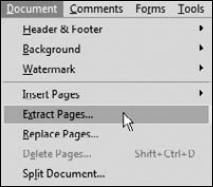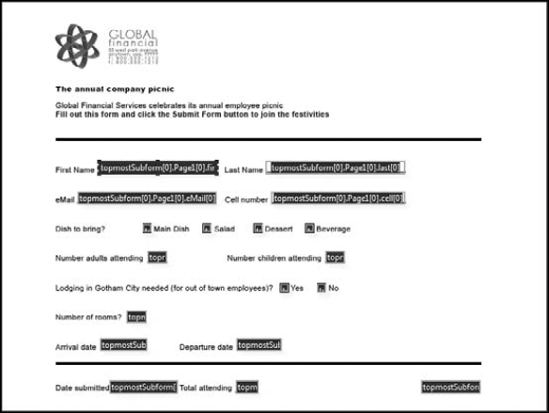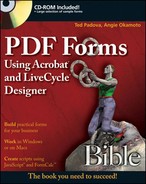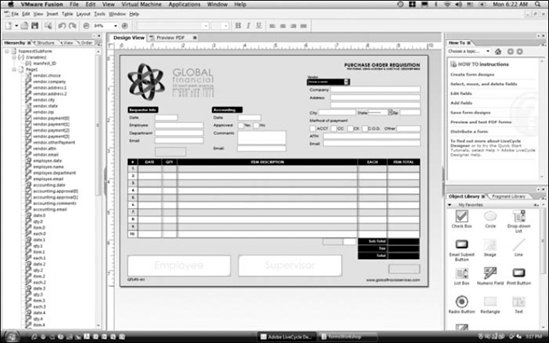If you used PostScript fonts back in 1985, you were an Adobe customer and a Macintosh user. If you used Adobe Illustrator back in 1986, you used Illustrator on a Macintosh. If you were one of the first to purchase Adobe Photoshop in 1989, you definitely used a Macintosh computer.
Adobe began its life serving Macintosh users. Nothing appeared on Windows until Windows 3 was released much later in the 1990s. When Adobe began developing cross-platform software, the initial incarnations of the Windows versions took a backseat to their Macintosh counterparts. Using Illustrator 4 on Windows was clunky and very slow, and Photoshop didn't appear on Windows until Aldus Photostyler on Windows went into retirement.
As Adobe evolved with much more sophistication and support for Windows applications, Macintosh users at times felt a little betrayed seeing more support and more features available for Windows applications than Mac applications. This is most evident when looking at Acrobat Pro on the Mac compared to Acrobat Pro Extended on Windows. Of course, when it comes to LiveCycle Designer, the Mac community feels completely left out, and the continual cry from the Mac audience is "when will we see LiveCycle Designer appear on the Macintosh?"
Despite what some users may think, Adobe is committed to serving a cross-platform audience. This is most evident when you look at the Creative Suite 4 applications. In just about all the CS4 programs, you can equally perform the same tasks in each individual program on either platform.
Adobe's development decisions are not based on any particular bias or influences in market share. The most important decision is how well a product performs within an operating system. Unfortunately, some things work on one system that don't work on another. In addition, you have to look at the history of a product's development. Those programs initially engineered by Adobe over the past two decades were all designed for cross-platform performance. With other products, Adobe acquired many from developers that didn't have a focus on delivering cross-platform applications.
Adobe LiveCycle Designer falls into this last category: The issue of what you can do on one platform versus another is related to the fact that Designer was not a program originally engineered by Adobe. As of this writing, if you want to use Designer, you need to use the product on Windows. For the Mac user, you are fortunate if you have an Intel Mac, because using Designer on the Mac with Windows installed and Acrobat and LiveCycle Designer for Windows, you have the same benefits at hand as the Windows-only users.
In this chapter, we offer some suggestions and recommendations for the Macintosh users who want to use Adobe LiveCycle Designer on their Macs.
If you're curious about why Designer is not a product that can be installed on Mac OSX, understanding a little development history can help ease the curiosity.
Adobe Acrobat was developed and engineered internally by Adobe Systems and first appeared in 1993 as a cross-platform product. In 1996, Acrobat 3 was introduced with the first inclusion of the Forms tools, and in version 3.02, Acrobat JavaScript was added to the program. From 1996 through the current date, Acrobat has been upgraded by Adobe supporting both the Mac OS and Windows operating systems.
LiveCycle Designer was originally developed by Delrina in 1995 as a Windows-only product (under a different product name). Later that year, the product was purchased by Symantec. A year later, Designer was purchased by JetForm, which later changed the company name to Accelio. In 2002, Adobe acquired Accelio and with it the product we now know as Adobe LiveCycle Designer ES.
Through the early development stages, the product was engineered by several companies without having any thought for fitting into a much larger product inventory such as the Adobe LiveCycle products. In 2004, Adobe ended its support for the Accelio product and seriously looked at developing Designer. Later that year, we saw the introduction of Adobe Designer 6.0, and with this release, Adobe included support for creating dynamic forms with data propagated with what was then known as the Adobe Form Server.
Since 2004, Adobe has seriously looked at Designer as a rich tool to create dynamic forms while maintaining its commitment to Acrobat forms for cross-platform Acrobat users. If we could roll back the clock and put the initial engineering of Designer into Adobe's hands, we might have a cross-platform version of Designer today. Still, it's only a dream, because of the restrictions imposed by operating systems.
For the Adobe user, Designer looks like a visitor from a foreign land. The interface and methods for using the program don't quite fit into the Adobe culture we see when using the Creative Suite applications. The tools, palettes, and menu commands look and feel a little different than when using other Adobe products. And the reason is primarily because Designer is an inherited product and not an Adobe original product.
As Designer matures, we expect to see much improvement and perhaps one day we'll see the product released as a cross-platform application. Until then, if you're a Mac user, you must be content with using Designer on Windows that you can install on your Intel Macs.
Although products have been released for the Macintosh to support installing Windows, the real advantage for running Windows on a Mac is on Intel Macintosh computers. If you're a Mac user working with a PowerPC, you should forget about reading this chapter, tear the book in half at this page, and give the chapters that follow to a Windows buddy.
For Intel Macintosh users, you need several things to run Designer on your Mac. First, we talk about using Designer on Windows using Mac OSX Leopard or greater. Be sure to upgrade your Mac OSX software to the latest release.
In addition to your Mac OSX operating system, you must acquire a virtual machine application that will allow you to install Windows on your Mac. Several products are available to create virtual machines. The most popular products include:
Apple's Boot Camp: Boot Camp supports most of the 32-bit releases of Windows XP and Vista. When running Windows applications, they run at native speeds. As a matter of fact, most Windows users who have purchased Intel Macs claim that running Windows applications on a Mac with Boot Camp has noticeable speed performance increases. We haven't tested Boot Camp on an Intel machine, so we cannot confirm this. However, you can browse numerous reports on the Internet to find the claims made from users.
When you install Windows under Boot Camp, you have full access to multiple processors, accelerated 3D graphics, and high-speed connections such as USB, Firewire, Wi-Fi, and Gigabit Ethernet. The difference between Boot Camp and other virtual machines we talk about in this chapter is that you have to reboot your computer to use one operating system or another. You cannot run Mac OSX and Windows concurrently on your computer. For more information on Boot Camp, visit
www.apple.com/macosx/features/bootcamp.html.CrossOver Mac: CrossOver Mac enables you to install Windows applications without installing Windows. Once installed, the applications integrate with Mac OSX. A huge range of Windows applications can be installed with CrossOver Mac, but we haven't tried installing LiveCycle Designer with this application. It may not be supported in the latest version as of this writing, but you may want to make frequent visits to
www.codeweavers.com/. You can download a trial version from the developer's Web site.Parallels Desktop: Parallels Desktop is a virtual machine that allows you to run Mac OSX and Windows side-by-side; as of this writing, it has over 1 million installed users. Parallels provides near native speed and full access to dual core processors. You can find out more about Parallels Desktop at
www.parallels.com.VirtualBox: VirtualBox is the only OpenSource application for virtualization that we know of. The product was acquired by and as of this writing is currently owned by Sun Microsystems. Because it is in continual development, you'll want to make frequent visits to
www.virtualbox.org/to check on the development progress.VMWare Fusion: VMWare Fusion is a product similar to Parallels, and although the installed user base isn't as great as Parallels, this product is our first choice. Like Parallels, Fusion enables you to run Windows and Mac OSX side-by-side, and you can easily exchange files between Mac and Windows applications via a folder visible while in either operating system. To learn more about VMWare Fusion, visit
www.vmware.com.
After you have an application installed to permit using Windows applications, you need to install Windows. Most of the products we talk about in this chapter enable you to install Windows XP or Vista. As of this writing, Windows XP is a much more stable operating system than Windows Vista SP1. The Internet is loaded with reports from Vista users about problems encountered with Microsoft's latest operating system release. You might check articles, blogs, and reports on the Internet before purchasing a Windows operating system. If you find many reports of problems with Vista when you do your search, choose Windows XP as your operating system.
You must install Windows when using the products we discuss in this chapter. This requires a separate purchase of Microsoft Windows over and above the virtualization software.
After installing Windows, you need to install Adobe Acrobat Pro or Adobe Acrobat Pro Extended for Windows. This again requires an additional purchase. If you are a current licensed user of Acrobat for the Macintosh, you can't use any upgrade path to purchase the Windows version of Acrobat. You need to purchase the full Acrobat Pro product in order to run Acrobat and LiveCycle Designer on the Mac.
Installation is very easy after you have your computer configured for running Windows. You open Windows on your Mac through one of the virtual desktop applications and insert the Acrobat Pro installer CD or purchase and download the application from Adobe's Web site. Open the Setup application, and follow the directions for installing Acrobat. The installer sees Windows on your computer the same as a dedicated Windows machine. When you complete the install process, LiveCycle Designer also is installed and runs the same as when using the program on a Windows-only machine.
In Figure 20.1, you can see a form opened in LiveCycle Designer on the Macintosh using VMWare's Fusion, Microsoft Vista, and Adobe Acrobat Pro Extended. At the top of the screen, you can see the Macintosh menu bar.
We assume you purchased this book because you're a serious forms author. If a good amount of the work you do is to create forms and handle form data, then you need to invest in the tools that enable you to do all the work required in your job. For some forms authors, you can get by using Acrobat forms exclusively. For others, you might be able to get by using LiveCycle Designer exclusively. For most serious forms authors, however, the best of all worlds is to use both programs and let the needs of your forms and data handling dictate what program to use for any given form.
Considering the price of the software versus a new computer system, not to mention the tasks of setting up a network to exchange files back and forth, installing the applications on your current system makes good sense and can provide you with the best affordable solution. If you're a Mac Intel computer user, you'll find using LiveCycle Designer to be flawless when you purchase the right tools to run Windows on your machine.
You may be a Macintosh user who works exclusively with Acrobat forms on your Macintosh. On occasion, you may receive a file that was created in Adobe LiveCycle Designer. By default, you cannot edit the Designer XML form in Acrobat.
You do have one workaround to convert an XML form to an Acrobat form. For Acrobat users on the Macintosh, you may want to convert a LiveCycle Designer form to edit form fields, add new fields, or edit the background of the form design. If this is your task, you need to weigh the time it would take to create a new form or to convert a form and edit the converted form. If the redesign of a form would take much more time than converting and editing the form, you can use a workaround to convert some forms.
Before we move ahead, you need to know one thing about Designer forms. You can save forms in Designer as dynamic forms or static forms. If you try to convert a dynamic form as we explain in the steps following, you won't be able to convert the form. Only static forms can be converted using the method we describe here.
Note
For more understanding of static forms and dynamic forms, see Chapters 24 and 26.
To convert a Designer XML form to a form you can edit in Acrobat, follow these steps.
Note
To follow these steps, you need a static form saved from LiveCycle Designer. You can use the globalPicnicRawLCD.pdf file from the Chapter 20 folder on the book's CD-ROM to follow these steps.
STEPS: Converting a LiveCycle Designer Static Form to an Acrobat Form
Open a form in Acrobat. For these steps, we use the globalPicnicRawLCD.pdf from the book's CD-ROM.
Open the Document menu. A quick look at the Document menu tells you whether the form you want to convert is a dynamic form or a static form. If Extract Pages is grayed out, you cannot convert the form in Acrobat because it's a dynamic form. If the Extract Pages command is accessible, the form is a static form.
Choose Extract Pages. Our example form is a static form, so we can convert the form. Choose Document

Edit and save form. You have a few options to choose from. You can delete all fields, save the form, and open the form in Form Editing mode. When Acrobat prompts you to use auto field detection, you can add fields on the form. If running auto field detection on the form doesn't adequately populate the form with field objects, you can modify the fields on the page. Figure 20.3 shows the form converted in Acrobat. All the field names inherited the subform root names, and the names are quite long. If the long names present a problem when analyzing the data, you can edit field names on the form.

Figure 20.2. If the Extract pages command in the Document menu is accessible, you can convert a Designer-created XML form to a form that can be edited in Acrobat.

Figure 20.3. After you convert the form, the field objects have long field names inherited from Designer.
One thing to remember when you convert XML forms to Acrobat forms is that any scripts either with FormCalc or JavaScript won't work on the form you convert. Any scripting on the original form needs to be rescripted using JavaScript in Acrobat.
If you need to convert dynamic forms to Acrobat forms, your best solution is to edit the form in LiveCycle Designer and forget about converting the form. When you convert a dynamic form, you lose all the dynamic characteristics of the form. If the form is really a static form that was saved as a dynamic form, you can ask the form author to save the form from LiveCycle Designer and then convert the form using the Extract Pages command in Acrobat.
If you absolutely must convert a dynamic form to an Acrobat form and you don't know the form author to request conversion of the form from dynamic to static, you can convert the form using another workaround. However, doing so requires you to go back to Acrobat 7, open the form in a Web browser, and save the form from the Web browser. It would be a rare circumstance for you to convert forms in this manner, so we won't go into any detail about it. It's there if you want it, but your best option is to visit a Windows machine and edit the form in LiveCycle Designer.

